Blackberries are deciduous shrubs that can produce fruit for up to 20 years. To get the most out of your new plant, you'll need to ensure the location is suited for it. If you're wondering more about blackberries and their pH level requirements, you're in luck. We've researched and can tell you what pH is best for this fruit.
Blackberries do best in slightly acidic to neutral soil with levels between 5.5 and 6.5.
Neutral soil has a pH of 7.0, so blackberries don't require very acidic soil. Keep reading to learn more about pH levels for blackberries, how to amend your soil, and more important information!
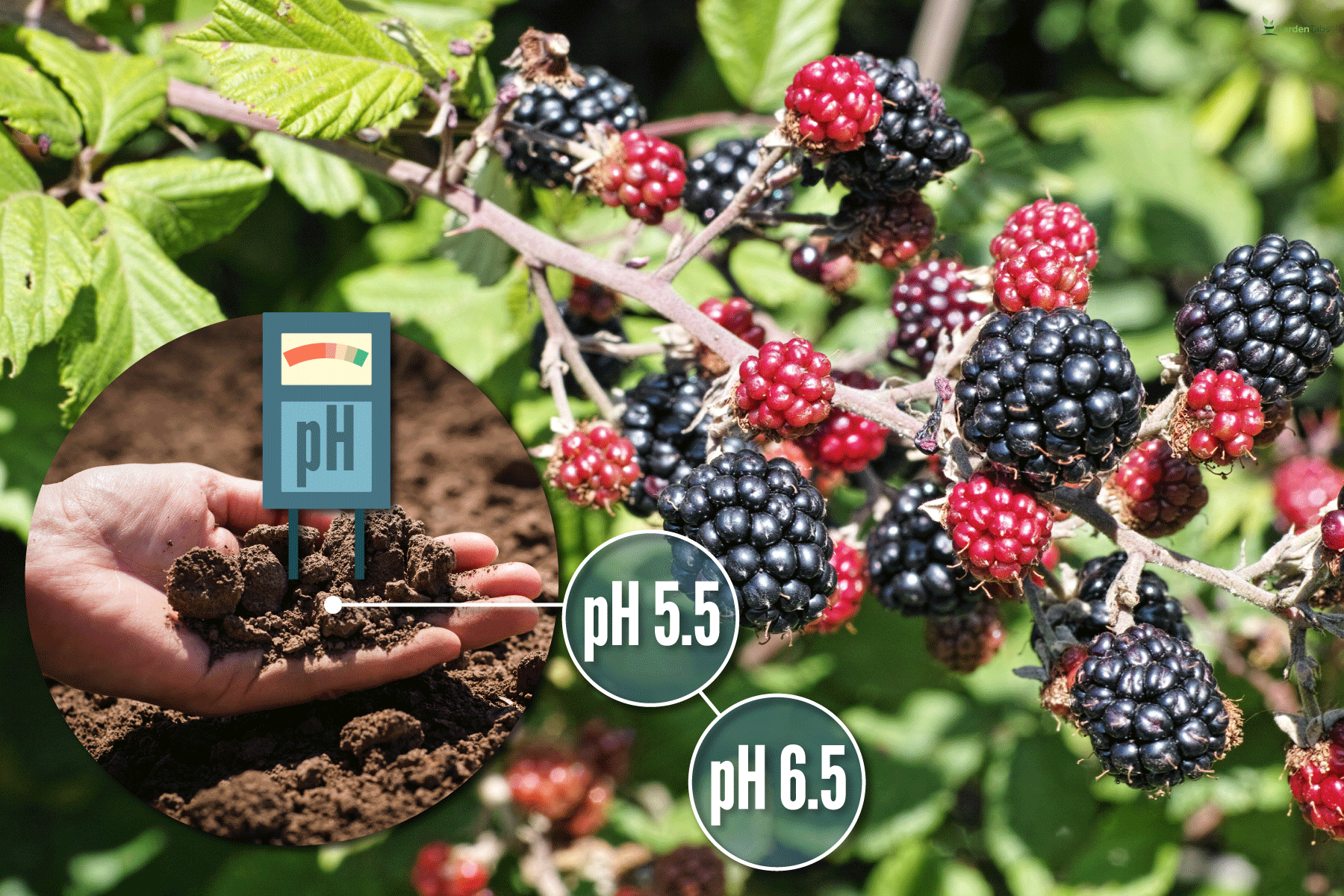
Blackberry Soil Conditions
Blackberries do best when planted in moderately to slightly acidic, well-draining soil. Some cultivars can tolerate pH levels as low as 4.5. However, most do best when the levels are between 5.5 and 6.5.
These plants also do best in sandy to loamy type soil. If you have clay soil, you should consider amending it to help with drainage.
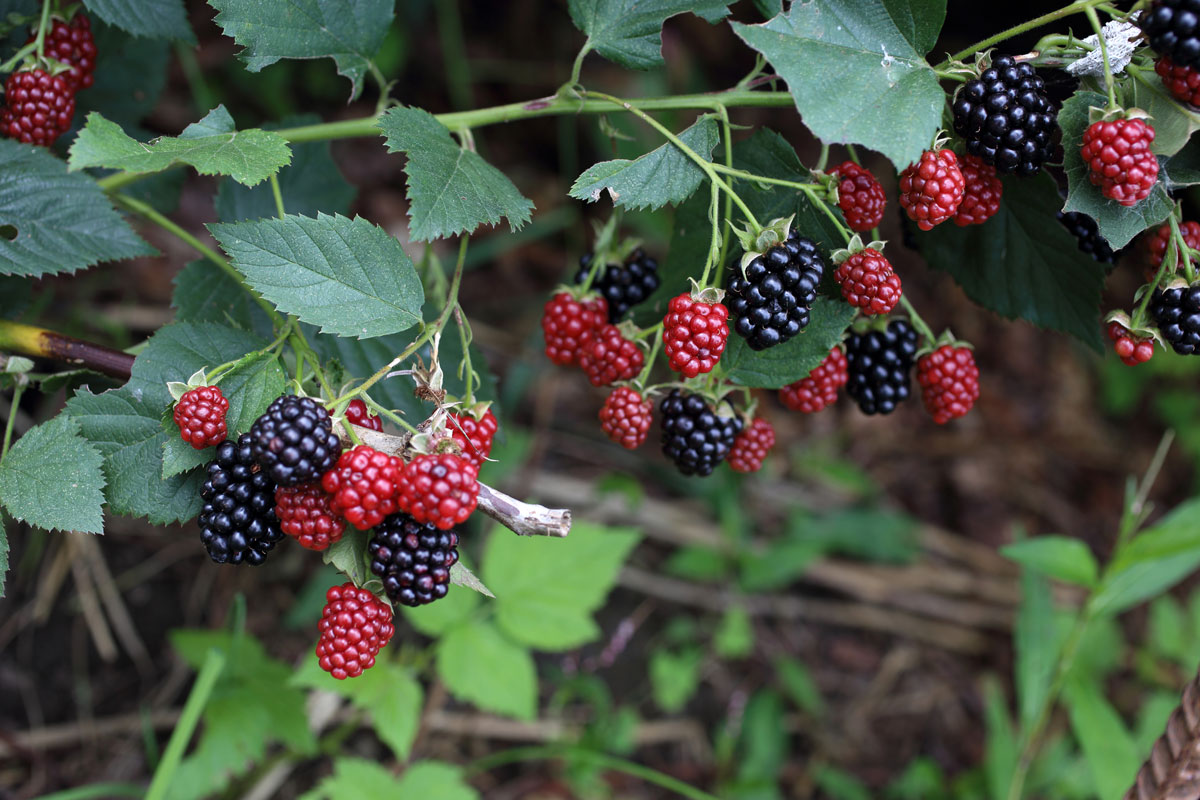
Testing Your Soil
Before you amend your soil, you should test it. You'll need to fix the soil if it's too compacted, soggy, or has high pH levels.
Testing your soil will also help you add the correct amount of acidifying product. Since blackberries only need moderately acidic soil, you shouldn't have to amend the soil much for pH levels.
You can buy a soil test kit online or send a sample to your local university for more detailed results. You should take a few samples throughout the area you plan to plant for the best results.
After you get the results, you'll know if you need to raise, lower, or leave your soil's pH levels alone. Soil test kits can also tell you if you need to add fertilizer or compost.
Try out this mail-in test on Amazon!
Check out this at-home test on Amazon!
Drainage Test
Next, you should test the soil's drainage. You can do this by digging a hole that is between 12 and 18 inches deep and 4 to 12 inches wide.
Fill the hole with water. Then, let it drain completely.
Make sure you have a ruler and a timer, then fill the hole with water again. After 15 minutes have passed, take the ruler to measure the amount of water that drained.
Multiply your results by four to get the water drain per hour.
It has very well-draining soil if your soil drains more than four inches of water per hour. If it drains less than an inch, you have poor-draining soil. Finally, average, well-draining soil is considered to be between one and three inches an hour.
Preparing The Soil
If your soil isn't well-draining and is easily compacted, you should put your plants in a raised bed. As long as the bed is at least 12 inches tall, it should be easier to grow blackberries than amending the soil's drainage.
Next, you can amend the soil's pH levels. If your levels are too low, you can use lime to raise them higher. Aluminum sulfate or elemental sulfur can be used to lower the pH levels.
Finally, ensure that the area is free of weeds and, if necessary, work in compost or fertilizer. Blackberries will need high amounts of nitrogen for the best fruit production. So, you may need to use a 20-20-20 fertilizer each year.
How To Plant Blackberries?
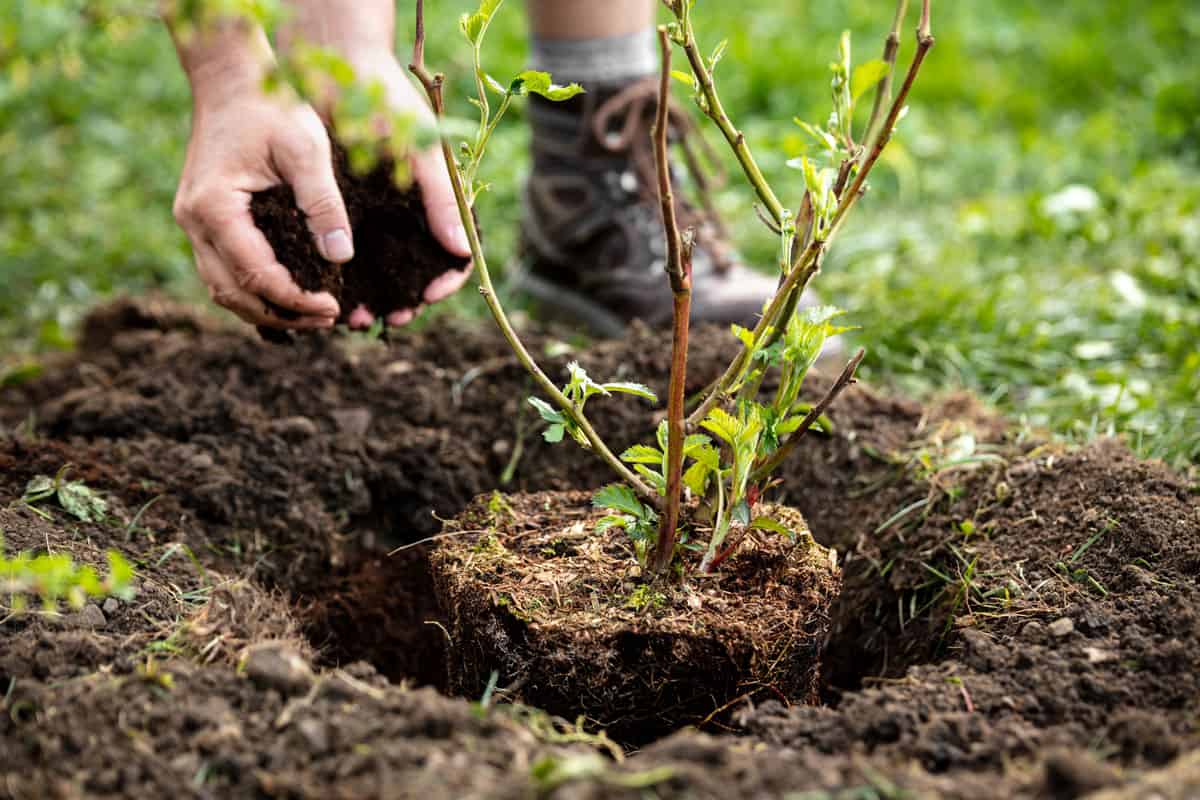
For the most part, it will be easier to plant blackberries by transplanting a live plant or a bare root. Starting from seeds is possible. However, it takes a long time to get results.
You should plant blackberries when they're dormant, either in the late fall or the early spring. If you live in a colder region, you may consider delaying planting. Extreme colds can kill certain blackberry species.
Bare Root
Soak your bare roots for up to two hours in room-temperature water before planting. The soak will help restore moisture.
After soaking, you'll place bare roots in holes that are up to three inches deep and at least eight inches wide. Gently spread out the roots. Then, backfill the hole and water.
Be sure to space your blackberries based on the variety you have. Semi-erect types should be planted between five and six feet apart. Erect cultivars should be at least three feet apart. Finally, trailing blackberries need between five and eight feet.
Transplant
To transplant blackberries into your garden, you'll need to dig a hole deep and wide enough for the root ball of the plant.
Gently move the plant from its container into the hole. Backfill and water.
If you're concerned about weeds, you can also add a layer of mulch around your plants.
Check out this set of five plants on Amazon!
From Seed
It usually takes a minimum of three years to get a productive blackberry plant when you start them from seeds. Before planting, you need to keep blackberry seeds in a container of peat moss in the refrigerator for up to six months.
Once the seeds open, move them to a flower pot in a fruit potting soil. Keep the dirt wet and mix in compost monthly. Your plants are ready to move outside once it's spring and they've started to sprout.
Plant them in a big enough hole to accommodate their roots without bending them.
Wondering how else to grow a blackberry? Check out "Can You Grow A Blackberry Bush From A Blackberry?" for more information!
What Types Of Trellises Do Blackberries Need?
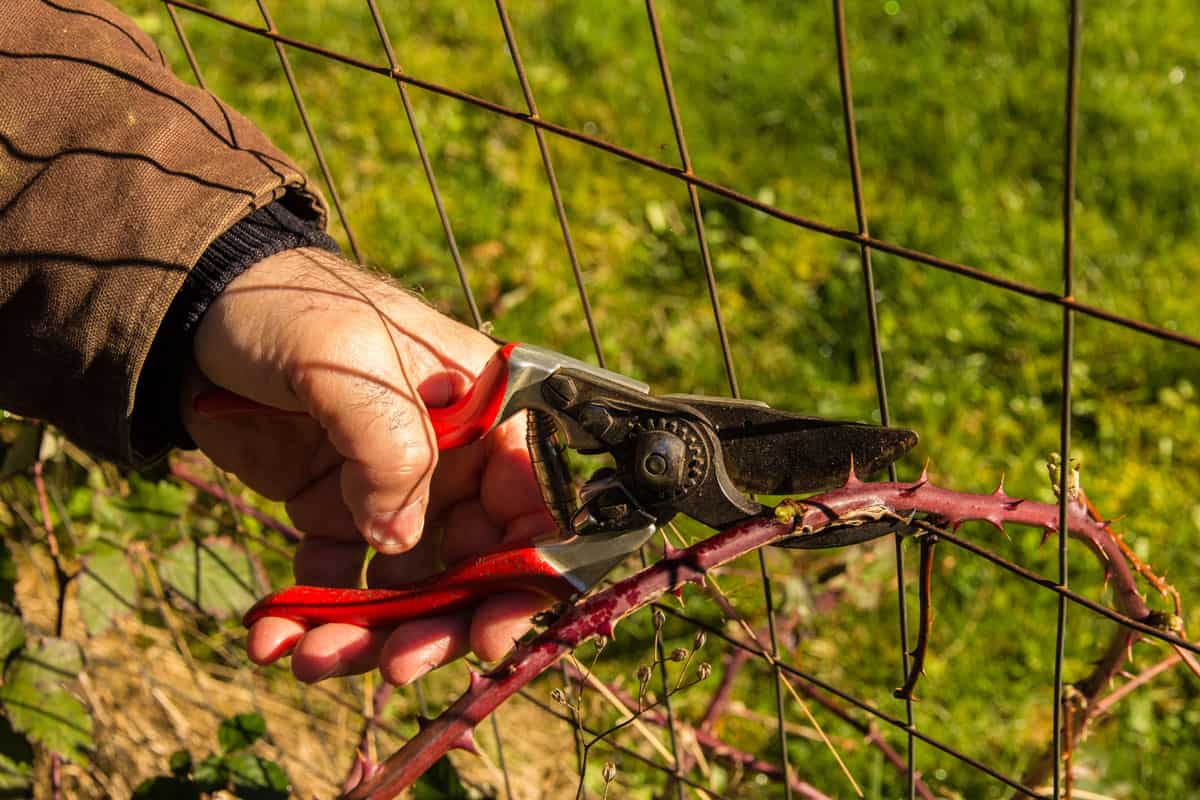
Blackberries need a trellis to protect the canes and keep fruit off the ground. However, the type of support you need will vary slightly depending on the type of plant you have.
Semi-erect and erect blackberries will benefit from a simple T-Trellis. However, these plants don't necessarily need support. So, you can also use a fence or other simple trellis.
Trailing blackberries do best on a three-wire trellis.
When putting in a trellis, it's essential to make sure it's tall and strong enough to support your plants.
Use posts that are at least eight feet tall. Then, put them two feet into the ground at the ends of each row. String a wire in between the two posts for every foot. You'll train the blackberries through the wires as they grow.
You can also train trailing blackberries on an archway trellis. If you want to use a fence, you'll need to add a wire mesh first. Then, train the blackberries through the mesh.
Check out this trellis kit on Amazon!
Take a look at this guide, "How To Attach A Trellis To A Wall Without Drilling? [Step By Step Guide]," for instructions!
What Can You Plant With Blackberries?
It's important to choose suitable plants to put near blackberries. For a more productive garden, you can choose herbs and fruiting shrubs to plant nearby.
Hazlenut and strawberries can be excellent options. However, you'll need to have enough space to grow strawberries.
Garlic is excellent for repelling aphids, beetles, and spider mites. You can also plant Bee Balm to attract pollinators.
Sunflowers are another good pollinator attractor. In addition, these flowers can distract grazing animals from eating your blackberry plants.
You can also plant tansy around blackberries to help support nitrogen levels in the soil. In addition, this plant is good for repelling bugs.
What Not To Plant With Blackberries?
You should avoid planting blackberries near crops in the nightshade family. Some popular plants in this group are tomatoes, potatoes, and eggplant.
The plants in this group can carry soil-borne diseases to your blackberries. So, you should also avoid areas where these crops were recently planted.
Some other plants to avoid are asparagus and carrots. Each of these plants requires high amounts of nutrients. In addition, they have deep root systems which will compete will the blackberry's roots.
In Conclusion
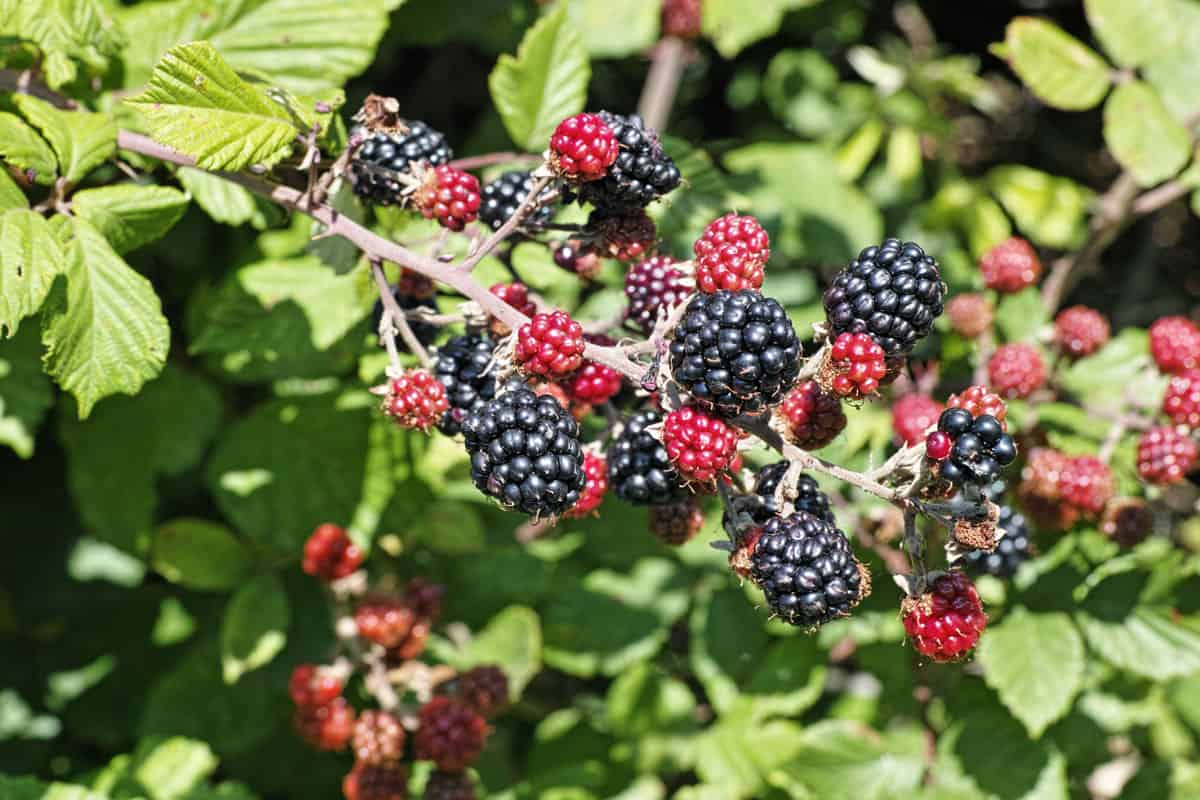
Blackberries do best in slightly acidic soil with a pH between 5.5 and 6.5. It's also important to have loose, well-draining soil and a location with full sun.





